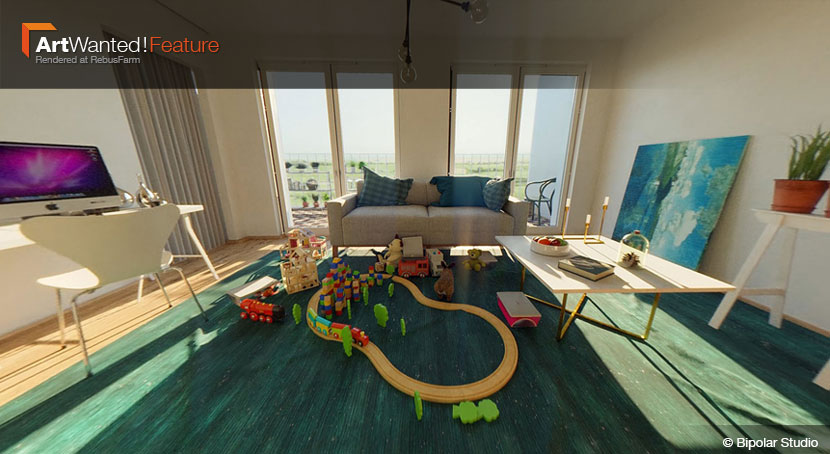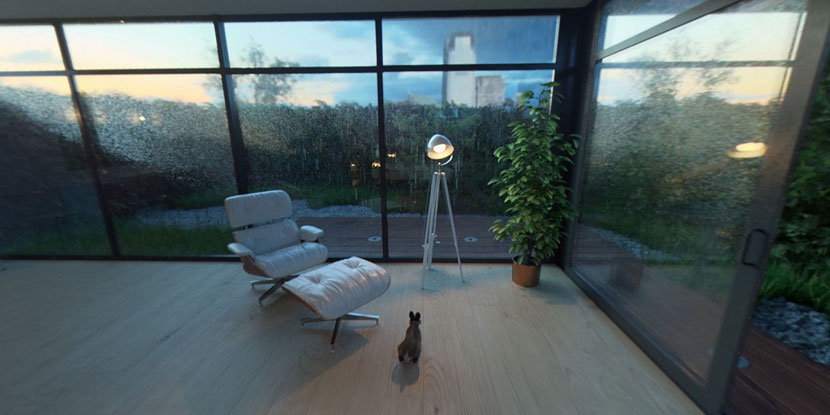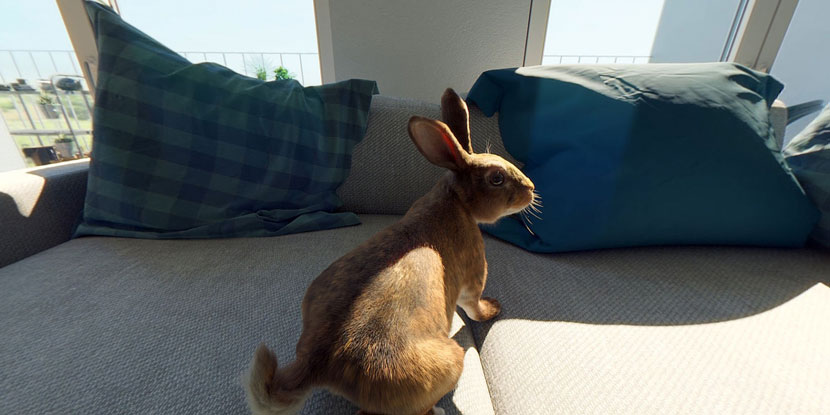Monday, May 14th, 2018 by Julian Karsunky

Follow the brown rabbit for this month’s ArtWanted! feature! It takes us straight into the heart of the Arts District in Downtown Los Angeles, California, where we meet Bipolar Studio, a high end, boutique production company. Since its inception in 2015, the team of passionate 3D artists has built an impressive portfolio encompassing state of the art CGI work and pioneering VR achievements.
We sat down with Bipolar Studio for an indepth look at the company’s latest commercial work. Join us on a bunny-hopping journey through space and time and find out what it took to bring this technical marvel to life!
Hi, thanks for taking the time! To start things off, can you please give us a brief overview of Bipolar Studio, its profile, field of work and clients?
We are a multidisciplinary studio that works with agencies & brands directly to execute stories and visuals. We like to merge film, art, science and computer generated imagery into something radically new. We do pretty much everything from developing ideas, shooting film to creating VR projects. Recently we started doing large scale CG print work as well.
Since the company was established in 2015, we’ve done projects featuring brands across all of these different categories from Google, Porsche, Airbnb, Mini, Toyota and others. Overall, we are a pretty tight but really capable team that can crunch out some big work. And this we really like!
Since the word ‘bipolar’ doesn’t necessarily carry a positive connotation, can you expand on this concept of duality that inspired the company’s name?
We get this question a lot, actually! Every good idea always goes through some kind of dual magnetic pull before it’s formulated, as a part of the creative process. Balancing the opposite sides to find the harmony is what we really liked in the name and also what we try to achieve in the everyday creative process.
As you are very involved in VR, we’d like to know your general assessment regarding the current state of the technology!
We’ve definitely done quite a few VR projects. We think it’s a really cool medium for so many brands and audiences. It’s really unlike any other medium in its unique way of showing us things and putting us in places that we remember later almost as if we experienced them first hand. That’s what we love about VR.
What new possibilities does VR provide in terms of CG production?
One thing that’s very different about VR is how we bring the projects to life. We’ve done both entirely live action and entirely CGI VR experiences. Both have their set of creative and technical challenges, but for us that’s what makes the project fun. We always find the best approach for the project that embraces the idea and the means of how we will bring it to life. We think that the live action is very focused on the people and the emotions, and the CG is very experiential, conceptual and free roaming. We enjoy both equally.
 One of the many unique set pieces tailor-made for ‘Follow the Rabbit’.
One of the many unique set pieces tailor-made for ‘Follow the Rabbit’.
Let’s talk about your work in more detail, namely the ‘Follow the Rabbit’ commercial you produced for Airbnb. How did you come up with the initial concept?
We really liked the idea of trying to depict the flowing cycle of time as a way to visually capture the feeling of the Airbnb travelling experience, which is very unique and personal.
The biggest thing that we were excited about was the rabbit going through constantly changing and progressing environments – kind of like going down different train compartments until the end. One of the main things that’s unique about the Airbnb experience is that we stay in someone’s home. There are these special signs of life all around us, and we tried to bring them forward in our set decorations.
In terms of set pieces, the commercial is massive in scope. Some of the everchanging scenes are only visible for a split second, yet they are all fully fleshed out and very distinct from one another. Can you tell us more about how you approached set design?
We wanted each apartment to stand out as a unique character, but have a color journey as we passed through them. We art directed and designed every corner of our digital sets placing books and statues in the shelves, toys on the floor, a worn leather jacket on a hanger and summer shoes in the corner. The environments are filled with detail and embedded with life.
We pulled the sun’s travel path data based on the location of our cities at that particular time of the year, to realistically depict the color of the light and its feeling. This helped us achieve photo realistic renders that feel familiar but unexplored.
 As the focal point of the round-the-world-trip, special attention went into the creation of the 3D rabbit.
As the focal point of the round-the-world-trip, special attention went into the creation of the 3D rabbit.
Going back to the rabbit for a moment: The obvious allusion to Lewis Carroll’s ‘Alice in Wonderland’ begs the question: Why isn’t it white?
That’s a great question! We actually did make the bunny white in the beginning, but after testing on VR headsets we wanted to add some detail and fur color variation to it. So this is one of those cases where the technology influenced our creative choices, but we are really happy how the bunny and the fur came out.
We modeled the rabbit from its skeleton up to its body and groomed every hair and every whisker. We chase after it wanting to get closer to it, until the very end, when we finally see its face, that’s when we are home.
What software did you use to create ‘Follow the Rabbit’?
We used Autodesk 3ds Max and Maya for all the CG work, heavily relying on the amazing abilities of V-Ray that for us was the only choice for lighting engine that could pull it off. The rest was done in Autodesk Flame. We also used the Adobe suites in between for look development and the art direction. Of course, since the project was massive in its 4K resolution and length, rendering was a daring task to accomplish.
Speaking of rendering, have you used RebusFarm before? If yes, please tell us more about your overall experience.
‘Follow the Rabbit’ was the first but certainly not the last time we used the RebusFarm render service. We were really impressed by the speed, the reliability and the support in getting every frame crunched on the about 200 machines running the project. This was something we definitely could not have done without, and are really thankful to RebusFarm for all the incredible help and support on this project!
You’re welcome! In closing, is there anything else you want to say? Any present or upcoming projects you’d like to mention?
We are definitely going to be back for some more crazy renders!
Thank you so much for taking the time and all the best for the future!
Keep up with Bipolar Studio here:
How to join ArtWanted!
You want to get featured in our ArtWanted! campaign and win 50 RenderPoints on top? Submit your work, rendered at RebusFarm, to Esta dirección de correo electrónico está siendo protegida contra los robots de spam. Necesita tener JavaScript habilitado para poder verlo.! Visit our Art Wanted! page for more information.
